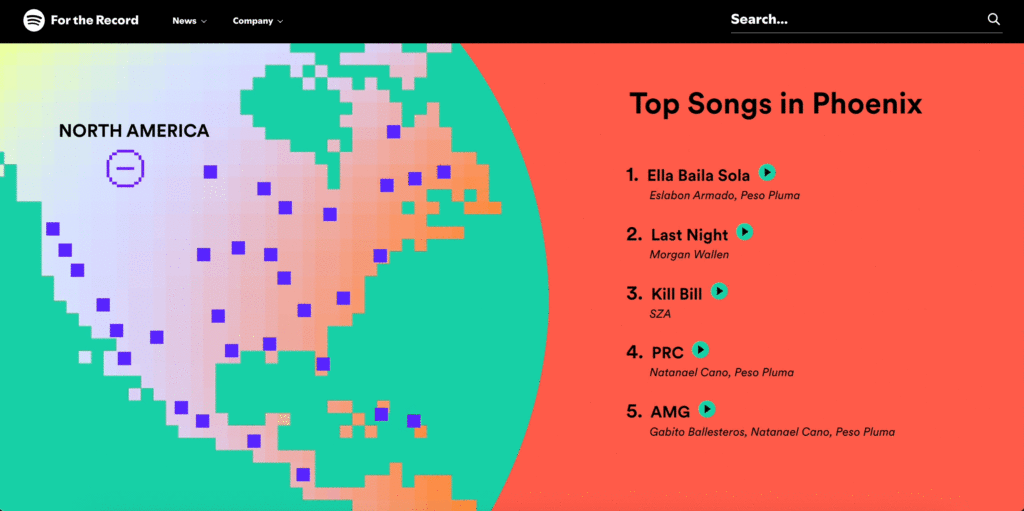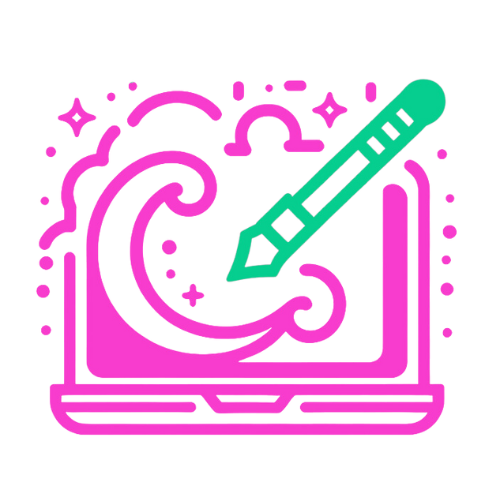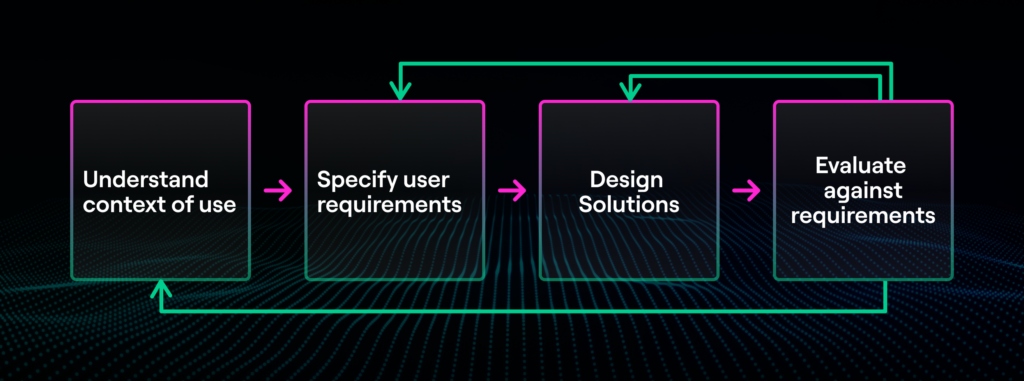
Ever pondered what truly creates an exceptional brand experience? While many might think it’s flashy ad campaigns or viral social media posts, the reality is that often, the most impactful components are those we overlook. Think about it: a well-crafted email, a detailed product brochure, or a thoughtful social post can significantly influence how people perceive your brand. Fast forward to 2024, and while the online stage has evolved, one thing remains constant: every single piece of content contributes to shaping your brand’s identity.
Content Design Is Core to Brand Experience
Brand experience goes beyond excellent customer service or having a stellar product; it encompasses every interaction someone has with your organization. At the core is content design. From sleek websites to sales presentations and email newsletters, everything reflects who you are as a brand.
Consider the stark contrast between brands you remember vs those that never have it all together. Things like pieced-together slideshows with generic stock photos not only confuse the audience but also undermine the company’s authority in the industry. On the flip side, look at any of Apple’s events. Their unified, visually appealing presentations at every touchpoint reinforce their brand identity and leave a lasting impression.
Similarly, a lack of direct engagement with your audience won’t cut it either. Consider the annual Spotify Wrapped campaign, featuring personalized playlists of your most listened to songs and engaging insights like an interactive map of the top streamed songs around the world. This approach both entertains and educates the audience to deepen their connection with the brand.

Keep in mind, these may be large brands with well established presence, but the point remains that every touchpoint matters in your content design and delivery. An uninspiring “About Us” section or a forgettable holiday card can weaken the emotional ties between your consumers and your brand, so invest in these areas to build trust and loyalty towards your products and services.
Roles and Responsibilities of Content Design
To build a successful content design strategy you need to follow a structured process. Understanding roles and responsibilities within your team is a great starting point:

Content Strategist
This role involves creating an overall plan outlining what needs to be done and how it should look from start to finish. This includes setting goals, identifying key messages, and ensuring they align with business objectives.

Content Designer
This person ensures the words used are simple enough for anyone to understand, avoiding unnecessary jargon while keeping things interesting. They collaborate closely with UX designers to ensure seamless integration into the user experience.

Copywriter
They are responsible for writing everything from website copy and blog posts to email and social campaigns. They should be ready to contribute copy in a variety of areas while maintaining consistency across all brand touchpoints in terms of voice and tone.

Visual Designer
Also known as a graphic artist, they should be your go-to for any visuals you need like logo design, layout, typeface selection, and other digital assets or necessary elements that enhance readability.
Maintain a cohesive approach by clearly defining the roles above as it relates to your process. Understanding these roles will help you better focus each component so that your content design aligns with your brand’s objectives and enhances the overall user experience.
Framing Up Your Content Design Process
To elevate your content design strategy, you’ll need to adopt an organized approach. If you haven’t already, consider incorporating a user-centered design (UCD) framework. UCD focuses on understanding the needs, behaviors, and goals of your users, resulting in more effective and engaging experiences. Placing users at the center of your content design process helps achieve this.

Content Design Process
Let’s break this down into more detail and briefly outline what your content design process should look like:
Step 1 – Ideation
- Start with a content audit to assess your current materials and create user personas that act as guides when developing new materials for specific groups who share similar needs.
- Brainstorm ideas relevant to your brand’s objectives that also resonate with your user persona.
- Identify what works for different audiences; some pieces might resonate while others fall flat.
- Once you find alignment, plan your out your content according to your teams given roles, and use tools like editorial guidelines and content calendars to stay organized from the start.
Step 2 – Creation
- Develop clear, engaging content that fits within your brand’s voice. Clarity and alignment with your user personas is the priority.
- Collaborate closely with your designers to ensure the intended message isn’t lost due to poor visual choices.
Step 3 – Review
- Revise accordingly, checking for accuracy and relevance to your objectives.
- This is also the time to circle back and evaluate the content you produced against your user personas.
- Review the overall presentation against the intended users’ expectations, and act on feedback from relevant stakeholders to finalize the version.
Step 4 – Launch
- Publish on the appropriate channels after optimizing for SEO, considering the platform—whether it’s web, email, or social media.
Metrics & Measurement
Your approach shouldn’t stop the moment you click send or go live. Measuring your efforts is arguably the most important component of continuous improvement. Here are some metrics to keep an eye on.
Engagement Rates
Whether it’s blogging, socials, or email marketing, you should always be keeping track of how users interact with your content by monitoring things like click-through rates (CTRs), time spent on pages (TSPs), and bounce rates. These indicators show whether users are interested or not and important to follow as you continue planning future content.
Take things further by utilizing advanced insights like GA4’s funnel explorations. These allow you to create visualizations of the various actions your users are taking as they navigate throughout your site and determine the rate of success for desired outcomes.
Conversion Rates
Measure the success of conversions (or Key Events in GA4) after consuming various types of content, like sign-ups, purchases, or downloads. Compare these numbers against each other or against set targets. If your numbers aren’t up to expectations, you’ll want to take a critical look at the engagement metrics mentioned in the previous section to assess what changes will be most effective for the future.
Not enough purchases? Check how much time people are spending on your product pages and what they engage with most. Lacking email sign ups? Compare how many people are viewing the page vs actually subscribing. You may find that you just need to make some simple changes to your copy or placement. There’s plenty to look into and test out for every business.
User Feedback
While the metrics above remain important, make an effort to gather qualitative data through surveys, interviews, or usability tests where possible. Investigating content performance via analytics tools may be insightful, but sending yourself into analysis paralysis isn’t going to reward you with much perspective, especially if you’re not seeing results. Surveying and usability testing will provide you insights into user satisfaction and better enable you to highlight areas in need of improvement based on their feedback.
Responding to New Developments
When thinking about the future of content design, you should consider how emerging technologies could reshape your approaches. Just in the last couple of years, the landscape of content creation and delivery has clearly seen an outpour of innovation, with the latest AI craze paving the way for easier and more accessible content creation. Let’s explore ways you can tap into these advancements to help optimize your content strategy.
AI in Content Design
AI-powered tools are frequently pumping out new ways to help users create and design content. These technologies offer a range of capabilities, from quickly generating ideas and drafting outlines to producing visual elements that seamlessly align with your brand. However, when discovering what these various new services are capable of, it’s easy to lean too far into their utility and produce lazy content or, on the contrary, inflate your workflow. To avoid wasted effort, it’s important to thoroughly vet each tool and understand their use case.

For example, on the visual front, AI-driven models like OpenAI’s DALLE can generate a wide array of highly detailed graphics, while models like GPT-4o and Anthropic’s Claude 3.5 Sonnet and can quickly craft layouts, or even begin entire web page designs based on your brand’s aesthetic. If you have any doubts as to the utility all of these models coming out provide, look no further than yesterday’s unveiling of OpenAI o1 and its performance in STEM related tasks.
In addition to broader offerings like OpenAI and Claude, more focused solutions are being introduced all the time. In the realm of content creation, AI writing assistants like Jasper aim to help brainstorm, draft, and edit content quickly while enforcing a consistent tone and style. Incorporating tools like these can save time while also maintaining the quality of your messaging across different platforms. Think of simple areas that lean into their strengths like using them in your outline and review processes to seamlessly check the content you create against your style guide.
Ultimately, the goal of integrating AI into your content design process should be to open up your team to focus on higher-level strategic tasks while leveraging technology to handle repetitive or time-consuming aspects. It should be a win-win situation where efficiency meets quality.
Final Thoughts on Lasting Impressions
As we wrap up, consider the following as you refine your content strategy:
- Maximize design opportunities: Go beyond the basics of just “getting it done”. Even simple content like email newsletters, about pages, and contact forms can be made visually appealing and powerful. Think about the audience, the message, and how best to deliver it.
- Accountability in content roles: This is important for maintaining a consistent brand identity. If you’re in a smaller organization in particular, consider the roles discussed earlier and determine who will wear each hat. Knowing that every member of your team’s responsibilities are understood will help you bring uniformity across all touchpoints.
- Measure your results and adapt: Always keep a pulse on how your audience is engaging with your content. There are plenty of blogs to post and tweets to send, but also plenty of adjustments that can be made to strengthen your brand along the way.
- Embrace emerging technologies: Look into the new tools being released and get an idea of where you can start building their utility into your various content workflows. From routine processes like content reviews to on the fly help with research, a lot of time can be saved by simply leaning into what these tools do best.
Building a strong brand through content is an ongoing process that never stops, even when you think it should. If you want your audience to remember your brand, every piece of content you produce should have a purpose, no matter how small. This means as your business goals change, so should your strategies for achieving those goals using different media.
Start by concentrating on one area where there might be room for improvement, then move outward from there until everything is just perfect, or at least close enough. What matters most is making sure that every single part of your content efforts contributes towards creating an experience that people will easily remember.
